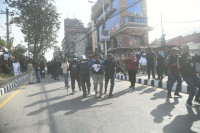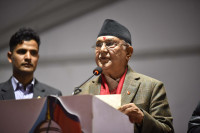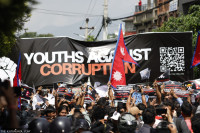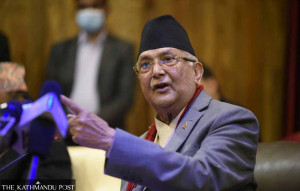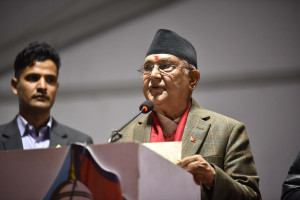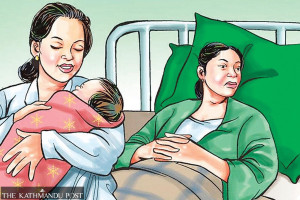Editorial
It’s only words
Rather than make lofty promises, the health ministry should look to improve the existing burn care system.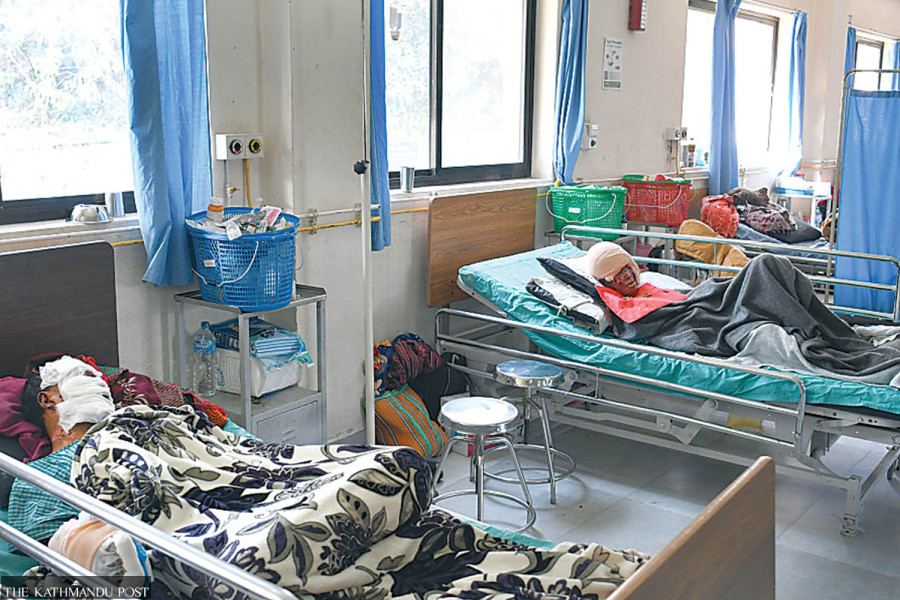
Health Minister Pradip Paudel has given more proof that his commitment to free healthcare is a publicity stunt. This time, it is the burn victims who have been misled. One of the many pledges made by Paudel after taking office last July was to provide free care to impoverished burn victims. Many victims and their families were relieved, as burn cases are more prevalent in rural Nepal, and the treatment cost is high. However, seven months after the scheme was announced, hospitals have yet to get the funds, leaving poor patients to pay their bills by borrowing money or selling property.
According to the World Health Organisation, burns are the second most common injury in rural Nepal, accounting for five percent of disabilities. The estimates of the health ministry show that every year, 55,000 people suffer from burn injuries. Another study reveals that burns claim the lives of 1,500 to 2,000 people a year. Among the eight hospitals that were supposed to be reimbursed by the health ministry for free burn care, only Kirtipur Hospital received funding of Rs15 million; however, it has already spent Rs27 million on treating impoverished burn victims and awaits more funds.
From the get-go, Paudel’s scheme sounded too good to be true. For the current fiscal year, the health sector received a budget of Rs86.24 billion, which accounts for only 4.6 percent of the total budget. This has already compromised programmes like the Safe Motherhood Programme and mental health screening training for children and adolescents. When the health ministry cannot even afford such vital programmes, how can it promise free healthcare?
Nor is funding the only issue. Most hospitals are only equipped to offer basic treatment to burn victims. Centralisation of treatment is an added burden to victims from rural, marginalised sections of society. Burn victims should be able to access primary treatment, such as cooling, wound dressing, and fluid replacement, in burn care centres that are no more than two hours away. However, this is a privilege in Nepal. Many hospitals outside Kathmandu often do not accept severe burn cases, as they cannot provide proper treatment and are afraid they will be held responsible if the patient dies. As most burn victims are sent to the Nepal Cleft and Burn Centre in Kirtipur Hospital, it has reached a point beyond saturation, and many have to wait long, painful hours for treatment.
Burn injuries can be reduced if people are aware of the risks they are dealing with and take protective measures. When resources are limited and hospitals lack adequate facilities, public awareness programmes can be effective. Many kitchens—both in homes and restaurants—are like ticking time bombs due to carelessness in handling stoves and gas cylinders containing liquefied petroleum gas. Additionally, fire extinguishers are often not visible, even in public buildings or vehicles. Yet the value of awareness and training continues to be overlooked.
The reduction of the health ministry’s overall budget by Rs3 million for the upcoming fiscal year is bound to make a mockery of Paudel’s promises of free healthcare. When false promises are made, they undermine the trust between patients and healthcare providers, leaving patients disappointed when the promised care is not available. Instead of setting unrealistic targets, the government should perhaps start by making gradual improvements to the existing burn care system.




 9.12°C Kathmandu
9.12°C Kathmandu
